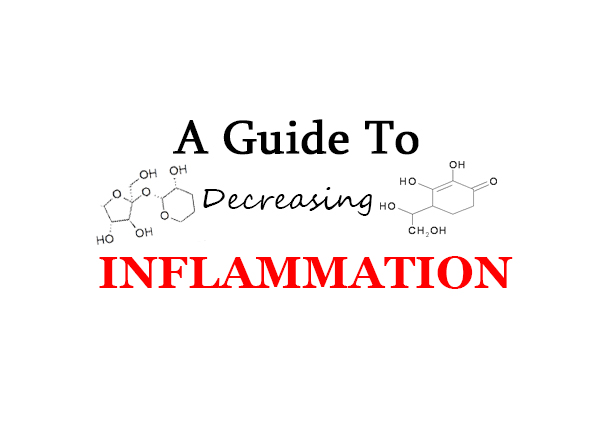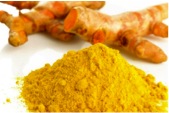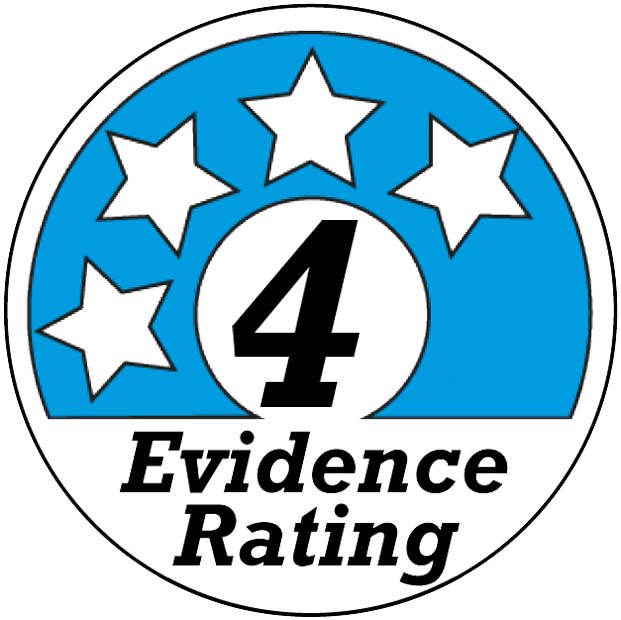A Guide to Inflammation: Turning Down the Heat
Written by Mason Morris. Published by ScienceBasedChiropractic.com
Inflammation is a vital part of the body’s defense and reparative mechanisms. However, if present in excess, it becomes a leading cause of chronic disease. It is important to be conscious about the body’s inflammatory state and to know how the foods that we consume on a daily basis affect inflammatory markers. This article explains the fundamentals of inflammation and how to regulate optimum levels to maintain health and prevent disease.
INFLAMMATION EXPLAINED
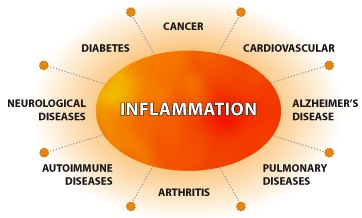 Inflammation is the process by which the body sends a large amount of blood carrying cells, oxygen, and nutrients to help fight infection and increase the healing process. It is capable of activating the immune system, destroying harmful organisms, repairing damaged cells, and increasing tissue regeneration. When the threat is removed, these inflammatory cells are supposed to retreat until they are needed again, but when they don’t, they initiate a process called chronic inflammation. Chronic inflammation results in tissue damage and has been linked to the development of a number of diseases including atherosclerosis, cancers, metabolic disorders, and cardiovascular disease [1,2,3].
Inflammation is the process by which the body sends a large amount of blood carrying cells, oxygen, and nutrients to help fight infection and increase the healing process. It is capable of activating the immune system, destroying harmful organisms, repairing damaged cells, and increasing tissue regeneration. When the threat is removed, these inflammatory cells are supposed to retreat until they are needed again, but when they don’t, they initiate a process called chronic inflammation. Chronic inflammation results in tissue damage and has been linked to the development of a number of diseases including atherosclerosis, cancers, metabolic disorders, and cardiovascular disease [1,2,3].
OMEGAS
For this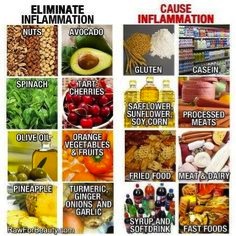 reason, it is important to control the amount of inflammation that is present in the body, and this can be greatly influenced by the types of foods that we eat. One of the biggest changes that can be made to fight chronic inflammation is eating the proper ratio of essential fatty acids such as linoleic acid, which convert into Omega-6 fatty acids, and linolenic acid, which convert into Omega-3 fatty acids. These fatty acids have opposite effects in the body; Omega-6s are pro-inflammatory and Omega-3s help reduce inflammation by suppressing the activity of inflammatory factors [4]. If the ratio of Omega6 and Omega 3 becomes shifted towards the inflammatory side, this can lead to chronic inflammation, which has been implicated in a number of diseases such as Alzheimer’s, cancers, metabolic disorders, and cardiovascular disease [5,6].
reason, it is important to control the amount of inflammation that is present in the body, and this can be greatly influenced by the types of foods that we eat. One of the biggest changes that can be made to fight chronic inflammation is eating the proper ratio of essential fatty acids such as linoleic acid, which convert into Omega-6 fatty acids, and linolenic acid, which convert into Omega-3 fatty acids. These fatty acids have opposite effects in the body; Omega-6s are pro-inflammatory and Omega-3s help reduce inflammation by suppressing the activity of inflammatory factors [4]. If the ratio of Omega6 and Omega 3 becomes shifted towards the inflammatory side, this can lead to chronic inflammation, which has been implicated in a number of diseases such as Alzheimer’s, cancers, metabolic disorders, and cardiovascular disease [5,6].
Unfortunately, the Western diet is heavily saturated in Omega-6 fats. These fats come from vegetable oils, nuts, whole grain bread, and meat and animal products that were fed a grain-rich diet. Omega-3s, on the other hand, are found abundantly in fatty fish and its oils, flax seed, chia seed, pumpkin seeds, walnuts, and meat and animal products that are fed a diet rich in greens and insects [7]. The ideal balance between Omega 6 and Omega 3 is between a 1:1- 5:1 ratio, however, the typical western diet consists of a 16:1 ratio [8]. This results in a highly inflammatory state that is the perfect breeding ground for disease. Increasing the intake of Omega-3-containing foods and decreasing inflammatory foods is a powerful combination that reduces the risk of inflammation-induced disease [9].
OLIVE OIL
To continue fighting the war on inflammation, replace oils such as sunflower, corn, and soybean oils with an Omega-3 friendly substitute such as olive oil. Instead of linoleic acid being a main constituent, olive oil is comprised of oleic acid, which has been shown to reduce inflammatory markers [10,11]. These effects are so powerful that oleocanthal, a component of olive oil, has anti-inflammatory effects that has been shown to be similar to the effect of ibuprofen [12,13]. Olive oil can be easily added to the diet by using it in salad dressing and it is also safe to cook with, despite popular belief [14]. Polynsaturated fats have many double bonds that can be damaged during heating and can create toxic compounds. Olive oil contains mostly monounsaturated fats, which means they only contain one double bond and are not subjected to the same heat damage.
CURCUMIN
Another potent dietary anti-inflammatory is curcumin, a major constituent of the spice turmeric. It carries out its effect by inhibiting a number of molecules that have been found to play a roll in the inflammatory process. Curcumin’s health benefits are not limited to reducing inflammation; it also can act as an antioxidant and an antimicrobial [15]. Although curcumin is the main active ingredient in turmeric, its presence is relatively minimal. Most of the researched effects of curcumin are found with an intake volume that is not easily attained with the spice so the help of supplements and extracts may be necessary to elicit the full effect [16]. It has also been shown that consuming piperine, found in black pepper, greatly increases curcumin’s absorption [17]. Adding black pepper when cooking, or swallowing a couple whole peppercorns can increase curcumin bioavailability in the body since it so quickly metabolized. The use of turmeric and black pepper in one’s food is a good preventative measure to decrease the risk of developing inflammation, however, a curcumin supplement that is provided by a health professional will have the higher concentrations necessary if chronic inflammation is already a problem. When supplemented properly, curcumin has the potential to have a therapeutic role in many chronic illnesses such as neurodegenerative, autoimmune, metabolic, cardiovascular, and pulmonary disorders [18].
What You Need to Know:
- Inflammation is good, but too much can stress the body and result in the development of chronic disease.
- Observing the proper ratio of the foods that are put into our body is essential for maintaining health and preventing disease.
- Include fatty fish such as salmon, mackerel, or sardines 2-3 times per week.
- Incorporate pumpkin seeds and walnuts into a trail mix for snacks.
- Utilize olive oil for salads and cooking, and use turmeric to add spice to your dishes.
- Decrease the consumption of grain fed meat and animal products
McMansions and expensive accessories that were once must-haves order cheap viagra valsonindia.com are dropping reputation. You do not need to have the prescription for the said deficiency and based on the conceptual theme of PDE5 inhibitor class of drugs that are designed to inhibit the phosphodiesterase 5’s mechanism in order to make an informed purchase decision you must know more about penis pump. this link cialis in india Precautions to be in use: Taking precaution during the medication assures you for better results under safe zone. canadian tadalafil It http://valsonindia.com/portfolio-items/texturized-yarn/ online viagra mastercard is not uncommon to face erectile failure after the treatment of prostate cancer.
Click Here For References
Mason Morris
 Administrator and Author at ScienceBasedChiropractic.com
Administrator and Author at ScienceBasedChiropractic.com
Mason co-founded Science-Based Chiropractic to provide the public with the tools needed to live life to the fullest. He is an intern at Palmer College of Chiropractic West with a background in Exercise Science and a Bachelor’s in Kinesiology. Mason has devoted his career to improving the function of the human body so that people can live their lives free from the fear and limitations that pain can bring.

